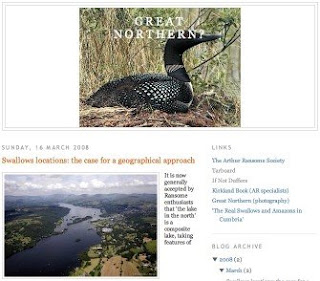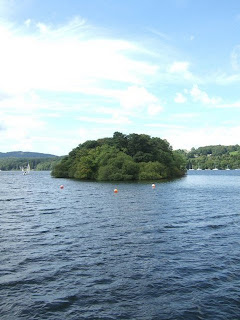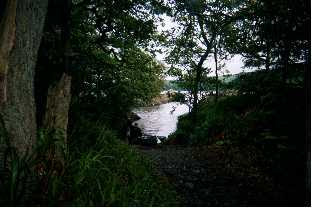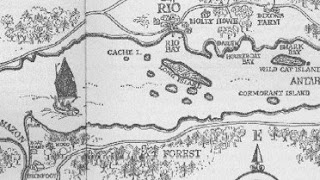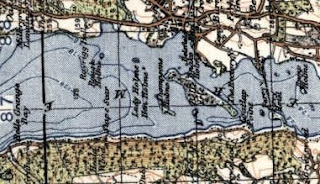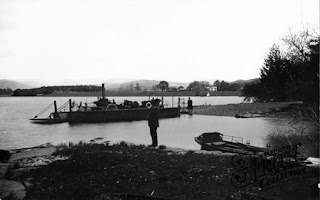An Amazonian Adventure Source: Lost Cities & Ancient Mysteries of South America
by David Hatcher Childress
Percy Fawcett had always been fascinated in archaeology and history. He often took long walks, exploring. In 1893, while a young British officer stationed at Tricomalee, Ceylon, he ventured out on one of his long walks into the remote jungle areas of the island.
That day, a storm overtook him, forcing him to seek refuge for the night under some trees. The following morning, much to his surprise, he discovered a huge rock with strange inscriptions of unknown character and meaning.
He copied the inscriptions and showed them to a Buddhist priest. The priest informed Fawcett that the inscription was a form of old Asoke-Buddhist that only those priests could understand. Ten years later, a Ceylonese Oriental Scholar at Oxford University confirmed the assertion.
Fawcett now had a keen interest in esoteric history and lost civilizations. During his army career, he led eight (8) South American expeditions under contract with the Bolivian and Brazilian governments to delimit the frontiers that these two countries shared with Peru and Ecuador.
In 1911, at a lecture before the Royal Geographic Society in London, Fawcett described the "lost world" on the borders of Bolivia and Brazil. In attendance was Sir Arthur Conan Doyle, creator of Sherlock Holmes and author of a book based on Fawcett's tales, The Lost World: The Adventures of Professor Challenger.
Later, H. Rider Huggard (author of King Solomon's Mines) gave Fawcett a mysterious twelve-inch-long basalt statue. Haggard told Fawcett that he had received the stone idol from the British Consul, O'Sullivan Beare, who in turn had picked it up in a lost city in Brazil in 1913. Based on the inscription, the idol was thought (hoped?) to have an Atlantean origin. Like a good luck charm, in 1925 Colonel Fawcett carried this stone statue with him on his fateful expedition into the Amazon rainforest.
Percy Fawcett was a true believer in the mythological Atlantis. However, he did not believe that the origin of Atlantis could be found in Brazil, but rather Brazil was once a colony of Atlantis. And it was his hope to prove the existence of Atlantis by rediscovering this lost city.
Years later, however, the basalt statue was found to have originated in the Mediterranean region circa 400 BC at Hallicarnassus before Hellenistic times. But how did this ancient statue find its way to a lost city in the Amazon jungle?
This statue (in addition to other ancient Mediterranean artefacts found in the interior of Brazil, such as a Dorian coin, which I will explain later) appears to prove that Brazil was being exploited commercially by Mediterranean traders long before Spanish explorers discovered South America!
With this understanding, it is now a probability that ancient mines and trading centers were developed in South America prior to 500 BC by the people of the Mediterranean region, namely Egyptians, Phoenicians, and later Ptolemaic Greeks.
Fawcett pointed out that Solimoes was the native name of the Amazon, which is also the same as Soloman or Solomon, suggesting the ships of King Solomon and King Hiram of Tyre made voyages to South America many years in the past. Rock inscriptions in the Amazon region even resemble Phoenician letters.
Interestingly enough, evidence appears to be mounting that the mines of Ophir (which I will discuss in the next section) may well have been King Solomon's mines - or the Lost Mines of Muribeca?
Just prior to Colonel Fawcett's ill-fated expedition, a Nafaqua Indian chief (whose territory lay between the Xingu and Tabatinga Rivers) told Colonel Fawcett about a "city" where strange temples could be found and baptismal ceremonies were practised. The Indians there spoke of houses with "stars to light them, which never went out."
Colonel Fawcett was told by the natives of Matto Grosso that mysterious "cold lights" had been seen by them in the lost cities in the jungle. He wrote to the British author Lewis Spense: "These people have a source of illumination which is strange to us - in fact, they are a remnant of civilization which has gone and which has retained old knowledge."
In Exploration Fawcett (Lt. Col. Percy Fawcett and Brian Fawcett, 1953) Colonel Fawcett states: "This is the first but not the last time I heard of these permanent lights found occasionally in the ancient houses built by that forgotten civilization of old. I knew that certain Indians of Ecuador were reputed to light their huts at night by means of luminous plants, but that, I considered, must be a different thing all together. There was some secret means of illumination known to the ancients that remains to be rediscovered by the scientists of today - some method of harnessing forces unknown to us."
Colonel Fawcett was determined to find this lost city, and in 1925 he launched an expedition deep into the interior of the Matto Grosso region of Brazil in search of that lost city.
On May 29, 1925, Colonel Fawcett wrote a letter to his wife, Nina, from "Dead Horse Camp" in the Matto Grosso region (see map). "Dead Horse Camp" was the same location Fawcett had reached during his 1920 expedition, which he had to abandon because his horse had died here; hence the name "Dead Horse Camp."

It should be noted that "Dead Horse Camp" was the very last outpost of civilization. From that point on, only unexplored, dangerous territory awaited him.
In Fawcett's letter to his wife, he said his first objective was to reach a waterfall in a week or ten days. "You need have no fear of failure..." he wrote. This letter was sent back to Cuyaba by an Indian messenger; they were also the last words Colonel Fawcett wrote. He was never seen or heard from again, at least officially.
Read the rest of this article
Colonel Fawcett at the Virtual Exploration Society
Continuing Cronicles of Colonel Fawcett
Colonel Percy Harrison Fawcett
Veil Lifts on Jungle Mystery, Guardian
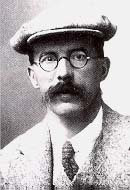 TarBoard, is a very lively discussion board dedicated to Arthur Ransome and his works. Whenever Arthur Ransome's politics have been discussed a consensus quickly arises supporting the view that whatever AR's politics may have been in his youth - and whatever lingering socialist sympathies AR may have retained throughout the rest of his life - the Swallows and Amazon series is completely apolitical. Those arguing the contrary are not taken very seriously.
TarBoard, is a very lively discussion board dedicated to Arthur Ransome and his works. Whenever Arthur Ransome's politics have been discussed a consensus quickly arises supporting the view that whatever AR's politics may have been in his youth - and whatever lingering socialist sympathies AR may have retained throughout the rest of his life - the Swallows and Amazon series is completely apolitical. Those arguing the contrary are not taken very seriously.